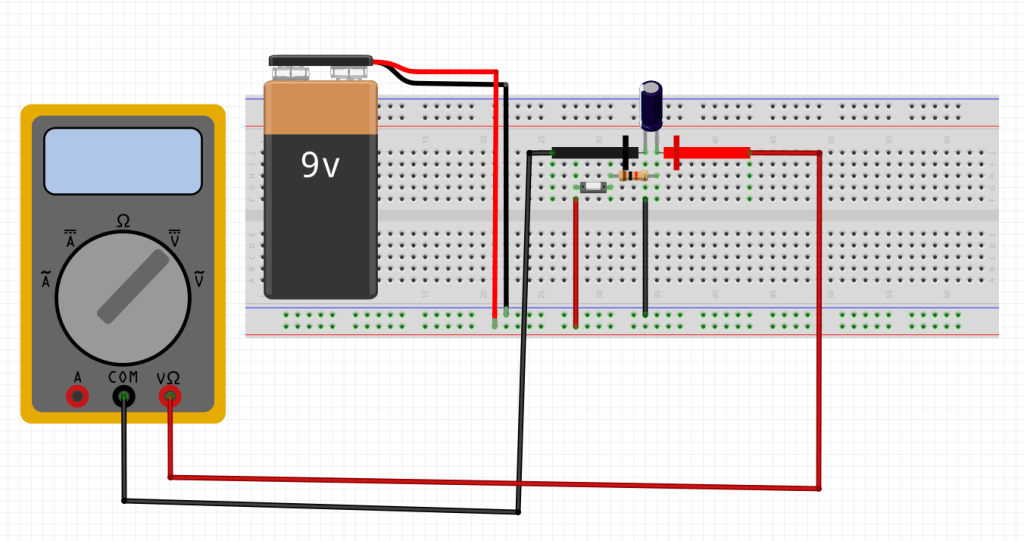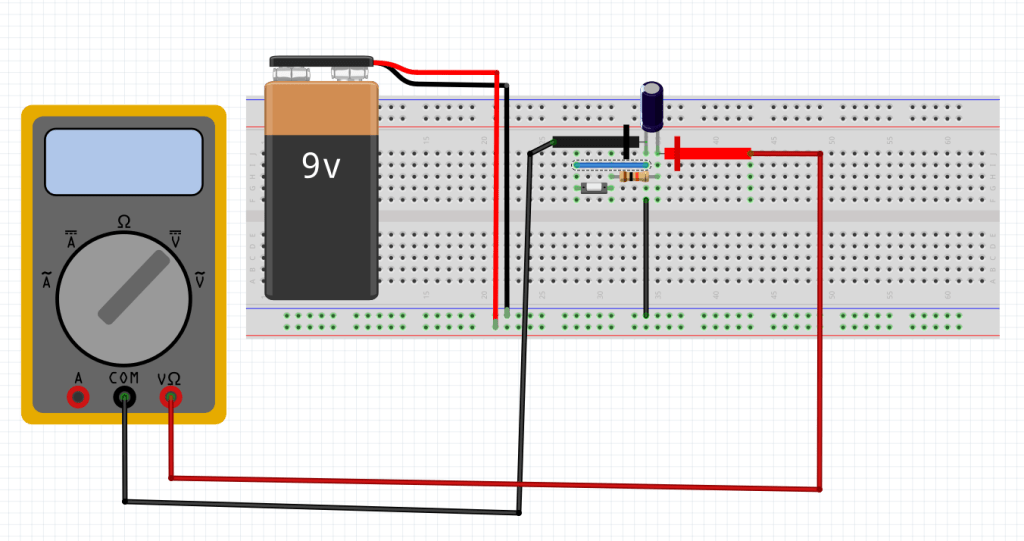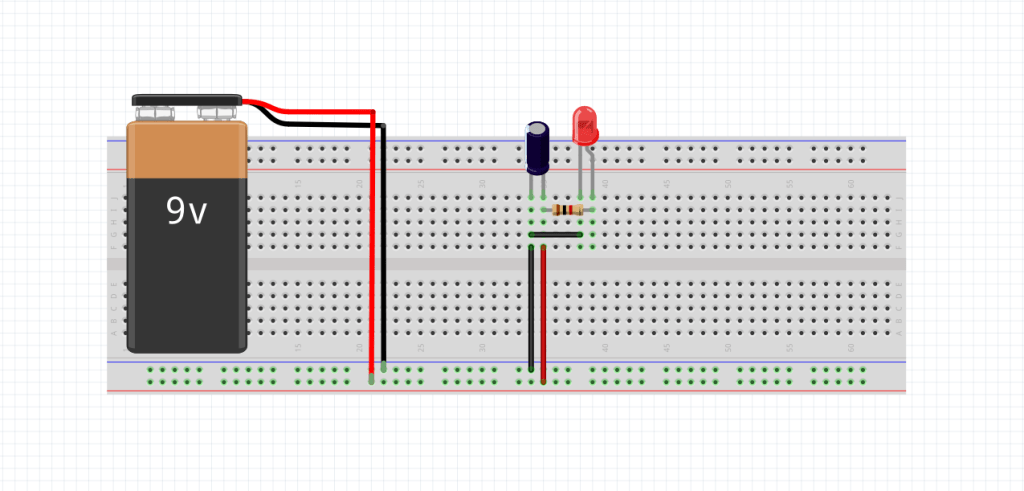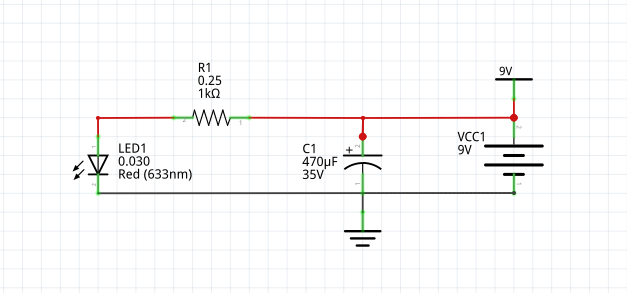- Introduction to Electronics for Hobbyists
- Understanding Resistors: Types, Power Ratings, High Voltage Applications, and Series & Parallel Circuits
- Resistor Basics: A Comprehensive Tutorial with Experiments
- Capacitors: A Comprehensive Guide
- Capacitor Basics: An In-Depth Tutorial with Experiments
- Understanding Inductors: Types, Ratings, Applications, and Selection
Post Stastics
- This post has 1019 words.
- Estimated read time is 4.85 minute(s).
Capacitors are fundamental components in electronics, playing crucial roles in energy storage, filtering, timing, and signal processing. This tutorial introduces the basics of capacitors, explores different types, explains how they work, and provides simple experiments to demonstrate their properties.
What is a Capacitor?
A capacitor is an electronic component that stores electrical energy temporarily. It consists of two conductive plates separated by an insulating material called the dielectric. When voltage is applied, the capacitor stores energy in the electric field created between the plates.
Key Characteristics:
- Capacitance (C): Measured in Farads (F), it defines how much charge a capacitor can store for a given voltage.
- Voltage Rating: The maximum voltage a capacitor can withstand before breaking down.
- ESR (Equivalent Series Resistance): The small resistance in series with the capacitance that affects efficiency.
Types of Capacitors
- Ceramic Capacitors:
- Small, inexpensive, and used in high-frequency applications.
- Capacitance typically ranges from picofarads (pF) to microfarads (µF).
- Electrolytic Capacitors:
- Larger capacitance values, used in power supplies and audio circuits.
- Capacitance ranges from microfarads (µF) to thousands of microfarads (mF).
- Polarized: Requires proper orientation (positive/negative leads).
- Tantalum Capacitors:
- Stable, reliable, and compact.
- Used in sensitive applications like audio processing.
- More expensive than electrolytic capacitors.
- Film Capacitors:
- Known for stability, low leakage, and low inductance.
- Used in high-voltage applications and for coupling or decoupling in circuits.
- Supercapacitors:
- High capacitance values, capable of storing large amounts of energy.
- Used in energy storage systems and backup power supplies.
How Capacitors Work
Capacitors store energy when a voltage is applied across the two plates. Electrons accumulate on one plate, creating a negative charge, while the other plate loses electrons, becoming positively charged. This creates an electric field in the dielectric, allowing the capacitor to store energy.
The formula governing the charge (Q) stored by a capacitor is:
$Q = C \times V$
Where:
- (Q) is the charge in Coulombs (C),
- (C) is the capacitance in Farads (F),
- (V) is the voltage in Volts (V).
Capacitor Charging and Discharging
When a capacitor charges, the voltage across its plates increases as it stores energy. When connected to a circuit, the capacitor discharges, releasing its stored energy. The rate of charging and discharging follows an exponential curve defined by the time constant ((\tau)):
$\tau = R \times C$
Where:
- (R) is the resistance in ohms (Ω),
- (C) is the capacitance in Farads (F).
The time constant ((\tau)) determines how quickly a capacitor charges or discharges. After 5 time constants, the capacitor is considered fully charged or discharged (around 99% of the charge or voltage).
Experiments to Understand Capacitors
Experiment 1: Charging and Discharging a Capacitor
Objective: Demonstrate how a capacitor charges and discharges through a resistor.
Materials:
- Breadboard
- 470µF electrolytic capacitor
- 10kΩ resistor
- 9V battery and Clip
- SPDT switch
- Multimeter
- Jumper wires
Procedure:
- Setup the Circuit:
- Connect the capacitor, resistor, switch, and battery in series on a breadboard.
- Attach the multimeter across the capacitor to measure voltage.
- Charging Phase:
- Close the switch to allow current to flow, charging the capacitor.
- Observe the voltage across the capacitor increase on the multimeter.
- Record the voltage at regular intervals (every 1 second) to see the exponential rise.

- Discharging Phase:
- Open the switch to disconnect the battery and discharge the capacitor through the resistor.
- Measure and record the voltage decrease over time.

Expected Results:
- The voltage should rise exponentially during charging and fall exponentially during discharging.
- The time constant (\tau = 10kΩ \times 470µF = 4.7) seconds will define the rate at which the voltage changes.
Experiment 2: Capacitor as a Filter
Objective: Show how capacitors filter AC signals and block DC signals.
Materials:
- Breadboard
- 470µF electrolytic capacitor
- 1kΩ resistor
- LED
- 9V Battery and Clip
Procedure:
- Power Storage:
- Connect the as shown below.
- Disconnect the battery and notice the LED continues to glow for a short time after power is removed.
- If you have an extra 470uF capacitor, add it in parallel with the existing capacitor in the circuit. Be sure to observe their polarity, and redo the experiment. It should take about a second for the LED to go out this time.

Here is the Schematic of the circuit:

Expected Results:
- When the battery is connected the LED should illuminate quickly.
- When the battery is disconnected, the LED should continue to glow for a short time after power is removed. Approximately 0.5 seconds.
Experiment 3: Supercapacitor Energy Storage
Objective: Compare the energy storage capabilities of a supercapacitor and a regular capacitor.
Materials:
- 1F supercapacitor (e.g., 2.7V)
- 470µF electrolytic capacitor
- 3.3V power supply or 2 AA batteries
- LED and 330Ω resistor
Procedure:
- Charge the Capacitors:
- Charge both the supercapacitor and the electrolytic capacitor using the 3.3V supply.
- Disconnect the power supply.
- Discharge the Capacitors:
- Connect the LED and resistor to the electrolytic capacitor and observe how long the LED remains lit.
- Repeat the process with the supercapacitor and observe the difference in discharge time.
Expected Results:
- The LED will stay lit significantly longer with the supercapacitor due to its larger energy storage capacity, demonstrating the higher capacitance and energy storage of supercapacitors.
Conclusion
Capacitors are versatile components used in various applications, from simple timing circuits to advanced energy storage systems. Understanding how they work and experimenting with them provides valuable insights into their behavior. From filtering to energy storage, capacitors are essential in electronics.
Materials and Suppliers
Materials List:
- Breadboard
- 470µF electrolytic capacitor
- 10kΩ and 1kΩ resistors
- 0.1µF ceramic capacitor
- 1F supercapacitor
- 9V battery
- 3.3V power supply or AA batteries
- Signal generator (or 555 timer)
- SPDT switch
- Multimeter
- Oscilloscope (optional)
- LED
- Jumper wires
Suppliers:
- Hobbyist Electronics Stores:
- Adafruit – Sells breadboards, capacitors, resistors, and other components.
- SparkFun – Carries a variety of electronic components, including capacitors and kits.
- Online Retailers:
- Amazon – Wide variety of components, kits, and tools for hobbyists.
- DigiKey – Great for sourcing capacitors, resistors, and other electronic parts.
- Mouser – Ideal for more specialized capacitors and high-quality components.
- Local Stores:
- Harbor Freight Tools – Ideal for multimeters and basic hand tools like pliers and screwdrivers.
- Home Depot – Carries basic tools and supplies like batteries and small hand tools.
- Capacitor-Specific Suppliers:
- Nichicon – High-quality electrolytic and film capacitors.
- Panasonic – Known for ceramic capacitors and supercapacitors.
With the right materials and experiments, you’ll be able to gain a solid understanding of capacitor basics.